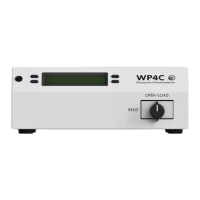16
SYSTEM
Upon successful completion of a water activity reading, the data in the terminal program
displays measurement time (in minutes), sample temperature, and water potential (in both
megapascals and picofarad). Figure16 shows a sample return.
Figure16 Sample data return
3.3 THEORY
Water potential is a measurement of the energy status of the water in a system. It
indicates how tightly water is bound, structurally or chemically, within a substance.
Water potential is defined as the potential energy per unit volume of water in a sample.
3.3.1 DEFINING WATER POTENTIAL
The total water potential of a sample is the sum of four component potentials:
gravitational, matric, osmotic, and pressure. Gravitational potential depends on the
position of the water in a gravitational field. Matric potential depends on the adsorptive
forces binding water to a matrix. Osmotic potential depends on the concentration of
dissolved substance in the water. Pressure potential depends on the hydrostatic or
pneumatic pressure on the water.
The WP4C measures the sum of the osmotic and matric potentials in a sample. Often
one or the other of these potentials will be the dominant factor in determining the total
potential. For example, solutions like the KCl calibration standard have only an osmotic
component. Soils bind water mainly through matric forces and therefore have mainly a
matric component (though salt-affected soils can have a significant osmotic component).

